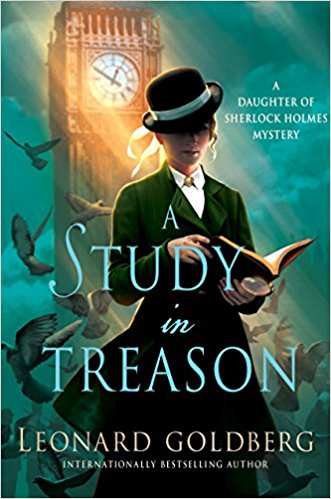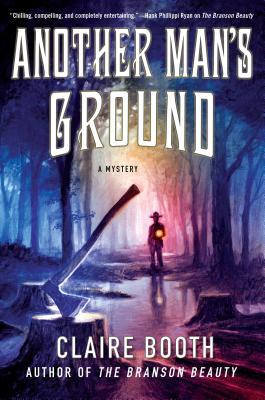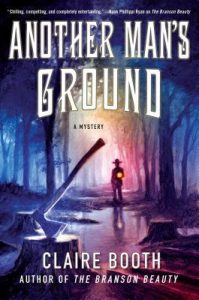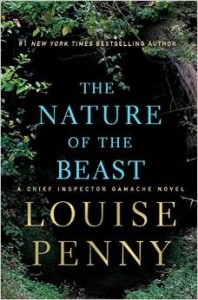 A Study in Treason (The Daughter of Sherlock Holmes Mystery #2) by Leonard Goldberg
A Study in Treason (The Daughter of Sherlock Holmes Mystery #2) by Leonard Goldberg Format: eARC
Source: supplied by publisher via Edelweiss
Formats available: hardcover, ebook, audiobook
Genres: historical mystery
Series: Daughter of Sherlock Holmes #2
Pages: 320
Published by Minotaur Books on June 12, 2018
Purchasing Info: Author's Website, Publisher's Website, Amazon, Barnes & Noble, Kobo, Bookshop.org
Goodreads
A continuation of USA TODAY bestselling author Leonard Goldberg's The Daughter of Sherlock Holmes, A Study in Treason is a new intriguing locked room mystery for Joanna and the Watsons to solve.
The following case has not previously been disclosed to the public due to the sensitive information on foreign affairs. All those involved were previously bound by the Official Secrets Act. With the passage of time and the onset of the Great War, these impediments have been removed and the story can now be safely told.
When an executed original of a secret treaty between England and France, known as the French Treaty, is stolen from the country estate of Lord Halifax, Scotland Yard asks Joanna, Dr. John Watson, Jr., and Dr. John Watson, Sr. to use their keen detective skills to participate in the hunt for the missing treaty. As the government becomes more restless to find the missing document and traditional investigative means fail to turn up the culprit, Joanna is forced to devise a clever plan to trap the thief and recover the missing treaty.
Told from the point of view of Dr. John Watson, Jr. in a style similar to the original Sherlock Holmes stories, A Study in Treason is based partly on facts in our world and partly on the facts left to us by Sir Arthur Conan Doyle.
Full of excitement and intrigue, this mystery is sure to be enjoyed by fans of Sherlock Holmes as well as the works of Laurie R. King and Charles Finch.
My Review:
 A Study in Treason is the followup to last year’s The Daughter of Sherlock Holmes. I’m a sucker for Holmes’ pastiches, and I absolutely loved that first book. Not only was it the right book at the right time for me, but it seemed to hit all the right notes, with Holmes’ daughter taking her father’s place and solving crimes with Dr. Watson Sr. as well as his son, Dr. Watson Jr. In keeping with the spirit of the original stories, Watson Jr. is the chronicles of these new events.
A Study in Treason is the followup to last year’s The Daughter of Sherlock Holmes. I’m a sucker for Holmes’ pastiches, and I absolutely loved that first book. Not only was it the right book at the right time for me, but it seemed to hit all the right notes, with Holmes’ daughter taking her father’s place and solving crimes with Dr. Watson Sr. as well as his son, Dr. Watson Jr. In keeping with the spirit of the original stories, Watson Jr. is the chronicles of these new events.
But after having read A Study in Treason, I’m starting to wonder if this is something that can only be done well once. Part of what makes the first book so much fun is the nostalgia factor; that it echoes the originals while being just a touch new and just slightly different.
Nostalgia can only carry a person, a book, or a story so far. And I think that shows in this second book. While Watson Sr. is an older version of himself in the canon, very much as he should be, the new characters need to go in at least a few new directions.
Instead, Joanna Blalock Watson feels more like a carbon copy of her famous father. It is ironic in a case that proves that nurture is more important than nature, that Joanna seems to have each and every one of Holmes’ talents and habits, in spite of not having been raised by him. While Joanna certainly knows who her father was, I’m not certain that she actually met the man.
Yet somehow, not only his talents but his every habit seems to have passed down to her, as if by osmosis, barely changed from the original. And while the talents could indeed pass through the blood, that the habits would too seems a bit unlikely.
The story in A Study in Treason, recalls The Adventure of the Bruce-Partington Plans, while its title calls back to the first published Holmes story, A Study in Scarlet. But in spite of the veritable school of red herrings thrown in the reader’s, and Lestrade’s, way, the case itself seems fairly obvious from the early stages. And obvious in a way that has been overused.
Escape Rating C+: I wanted to like this a lot more than I did, especially after the promising start in the first book. Instead, the story feels a bit thin and stretched, as though the author has taken a good idea and pushed it past its limits.
In order for this series to work, the characters need to change and grow. It makes no sense for Joanna to be such an exact replica of her father, particularly having grown up outside his influence. There should be some marked differences, and those differences would make her an interesting character in her own right.
She also seems to face or have faced little of the difficulties that a woman in a man’s profession would have faced in the 1910s. Or she has completely brushed all of them aside. Even if she chooses to ignore those differences, anyone she deals with on a professional basis would not. And that constant fight should have had some influence on her character.
There’s not enough there there, and I’m sorry to have to say that. I had high hopes for this series. But for a more believable female Holmes, I’m going back to Sherry Thomas’ Lady Sherlock series.

 Glass Houses (Chief Inspector Armand Gamache, #13) by
Glass Houses (Chief Inspector Armand Gamache, #13) by  There’s a saying that “the fish rots from the head down”. In many of the previous books in this series, culminating in
There’s a saying that “the fish rots from the head down”. In many of the previous books in this series, culminating in  Gamache is, as always, a fascinating character to watch. Although some of the early books in the series, beginning with
Gamache is, as always, a fascinating character to watch. Although some of the early books in the series, beginning with  Another Man's Ground (Sheriff Hank Worth, #2) by
Another Man's Ground (Sheriff Hank Worth, #2) by  Escape Rating A-: I have squeed a lot about this book. I did about the previous book,
Escape Rating A-: I have squeed a lot about this book. I did about the previous book, 
 The Branson Beauty (Sheriff Hank Worth, #1) by
The Branson Beauty (Sheriff Hank Worth, #1) by  The one place where The Branson Beauty needs a little work is in the development of the characters who inhabit Hank’s world. Only one member of his police force stands out, and only because she seems to be the lone female in the ranks, even if she is Hank’s second-in-command. Likewise, it took me quite a ways into the book to figure out whether the female at home Hank referred to was his wife or his daughter, and what she did and where she fit. (It’s his wife and she’s as overworked as he is) I left the story still not certain what the precipitating event was that sent Hank and Maggie to Branson, but I know there was one. I’m looking forward to discovering the answers to all these questions and more in future books. The next book in the series,
The one place where The Branson Beauty needs a little work is in the development of the characters who inhabit Hank’s world. Only one member of his police force stands out, and only because she seems to be the lone female in the ranks, even if she is Hank’s second-in-command. Likewise, it took me quite a ways into the book to figure out whether the female at home Hank referred to was his wife or his daughter, and what she did and where she fit. (It’s his wife and she’s as overworked as he is) I left the story still not certain what the precipitating event was that sent Hank and Maggie to Branson, but I know there was one. I’m looking forward to discovering the answers to all these questions and more in future books. The next book in the series,  The Daughter of Sherlock Holmes by
The Daughter of Sherlock Holmes by  The White Mirror (Li Du Novels #2) by
The White Mirror (Li Du Novels #2) by  In this second story of the travels of Li Du, exiled Imperial Librarian, he has traveled far from the Court he left behind. But even in this remote mountain valley, it is still very much with him, and not just in his bittersweet memories.
In this second story of the travels of Li Du, exiled Imperial Librarian, he has traveled far from the Court he left behind. But even in this remote mountain valley, it is still very much with him, and not just in his bittersweet memories. A Great Reckoning (Chief Inspector Armand Gamache, #12) by
A Great Reckoning (Chief Inspector Armand Gamache, #12) by  At the end of the utterly marvelous
At the end of the utterly marvelous  Jade Dragon Mountain by
Jade Dragon Mountain by